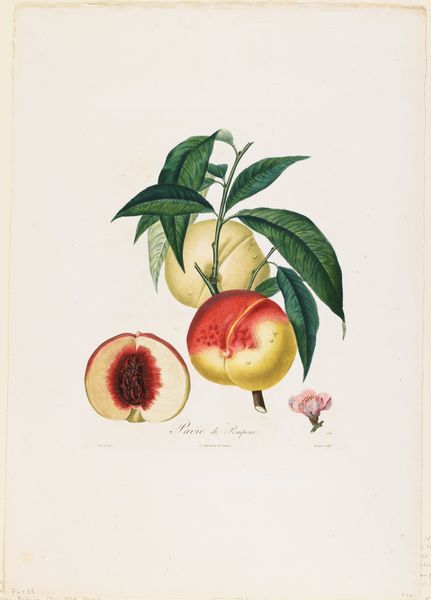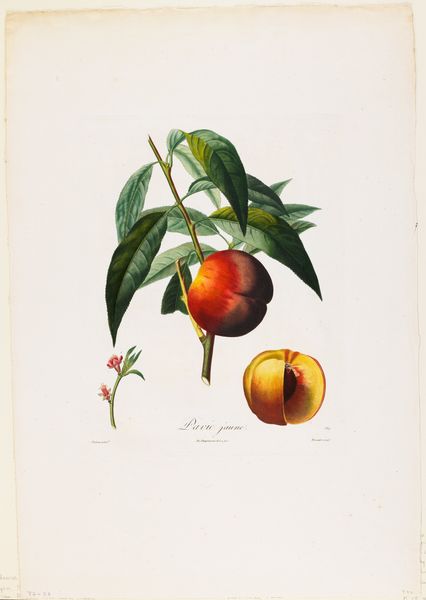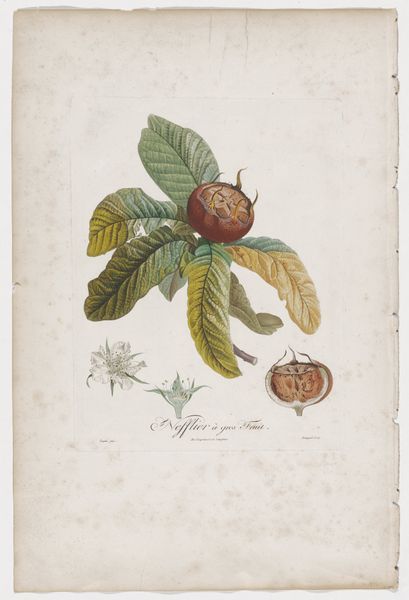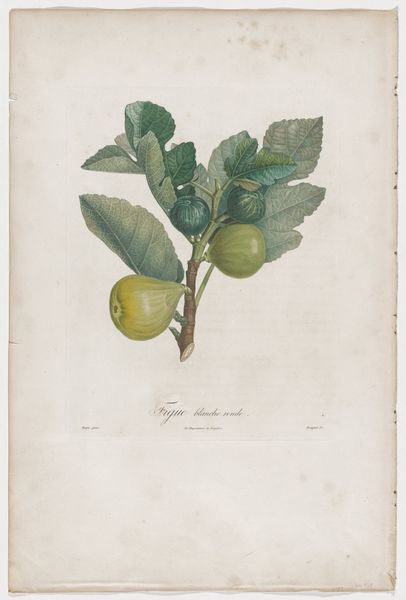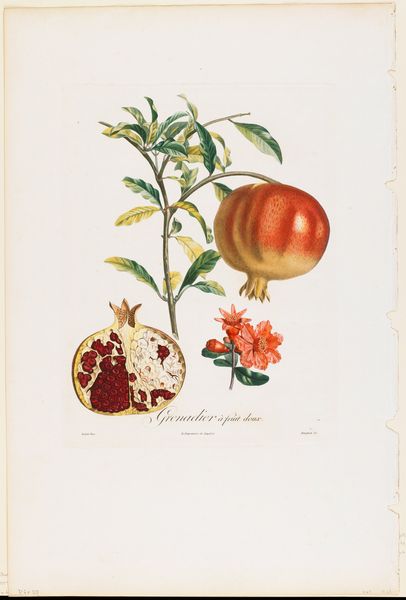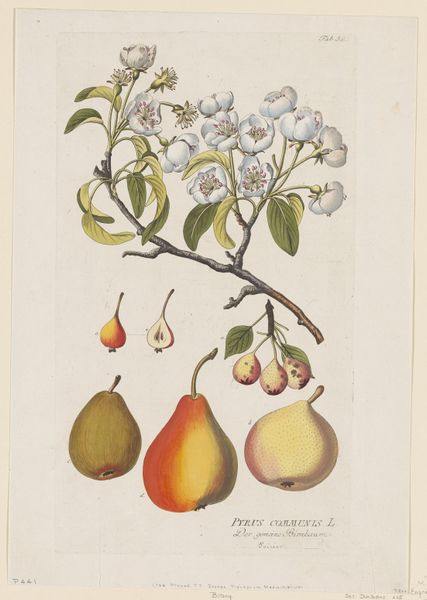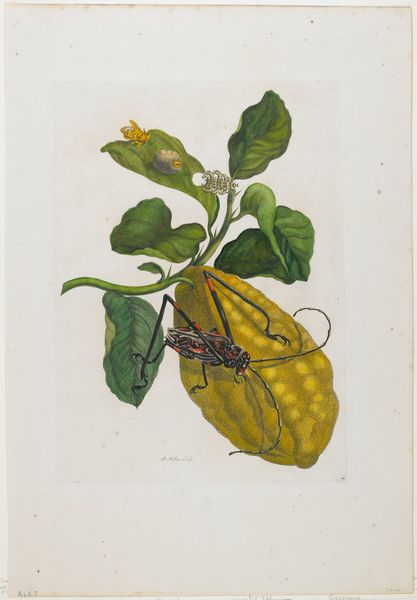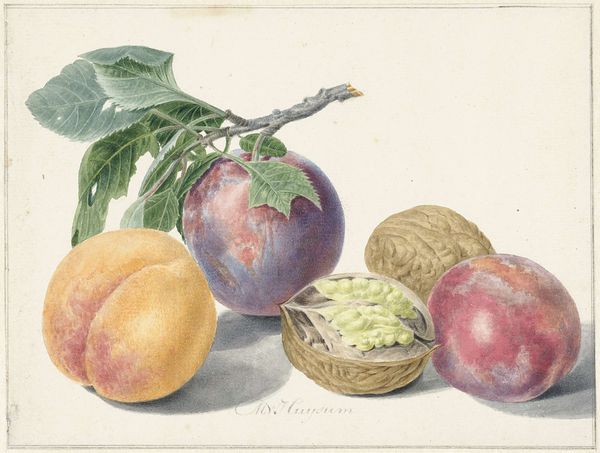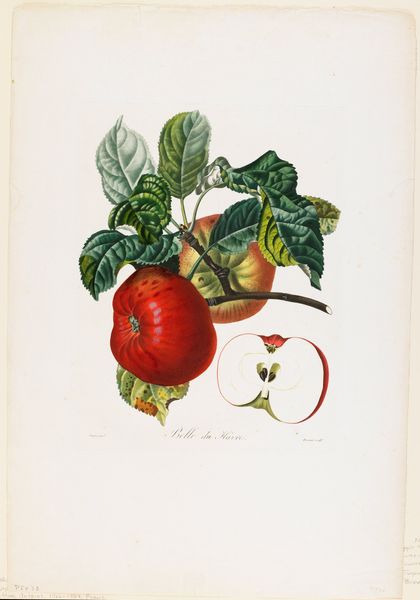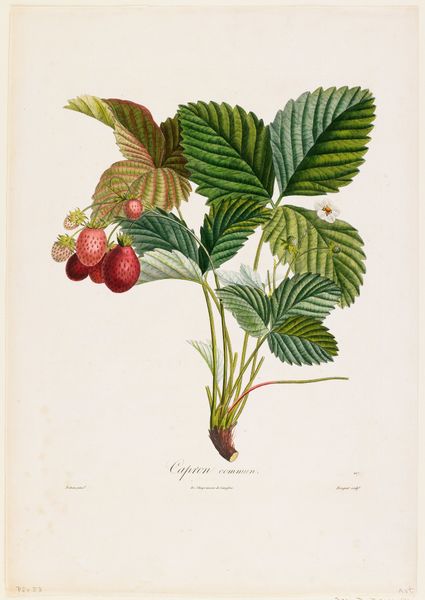
tempera, print, watercolor
#
water colours
#
tempera
# print
#
watercolor
#
food illustration
#
watercolour illustration
#
academic-art
#
botanical art
#
watercolor
Dimensions: 12 1/4 x 9 3/8 in. (31.12 x 23.81 cm) (plate)
Copyright: Public Domain
Editor: This is "Bezi de Chaumontel (Pears)", a print in tempera and watercolor from sometime between 1807 and 1835. It has a very academic feel to it – incredibly precise, almost clinical. What stands out to you about it? Curator: What strikes me is how this image operates within a complicated history of botanical illustration, one deeply entwined with colonialism. How were these fruits accessed and by whom? The ‘objective’ scientific gaze often obscures the power dynamics at play. Consider, too, who had access to the knowledge produced and disseminated through these illustrations, and to what ends was this information utilized? Editor: So you're saying that even something as seemingly innocent as a pear drawing could have a connection to broader social issues? Curator: Absolutely. The level of detail is incredible, and we need to think about labor – who was involved in cultivating the fruit, creating the printing plates, and distributing these images? Think about accessibility; it’s reasonable to assume they were produced for an elite audience during a time when widespread food scarcity existed. Editor: That makes me see it differently. I initially thought of it as just a pretty image, but now I'm thinking about all the labor and knowledge systems behind it. Was botanical illustration used to further agriculture? Curator: Indeed. These images played a role in shaping our understanding of the natural world and natural resources, which, historically, served colonial interests by assisting in the process of resource extraction and management. The rise of scientific illustration goes hand-in-hand with Europe’s imperial projects and expanding colonial empires. What about the single, very precise flower presented, versus the pears? Editor: Almost like the plant is for show, and the fruit is the commodity, there for exploitation? That’s pretty dark for a picture of pears! Curator: It prompts us to critically assess what these images omit and reveal about historical inequities. Recognizing this artwork's social implications transforms our comprehension. Editor: I’ll never look at fruit the same way. Thank you for your insight!
Comments
No comments
Be the first to comment and join the conversation on the ultimate creative platform.
